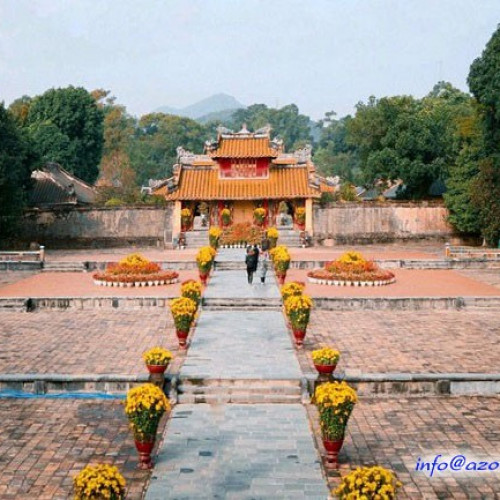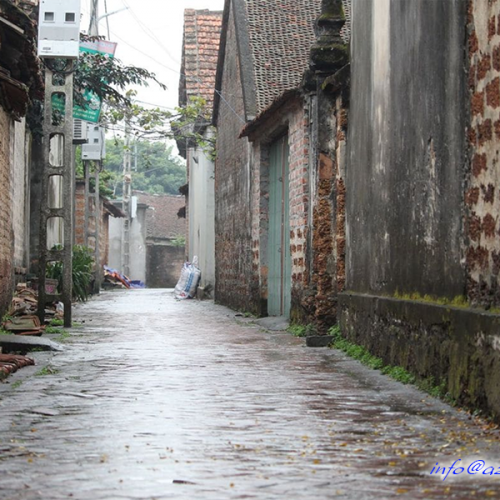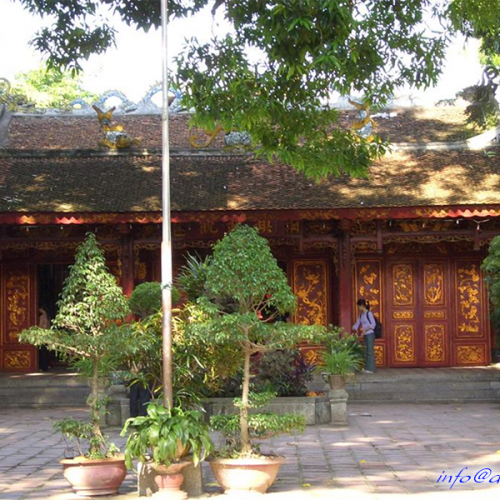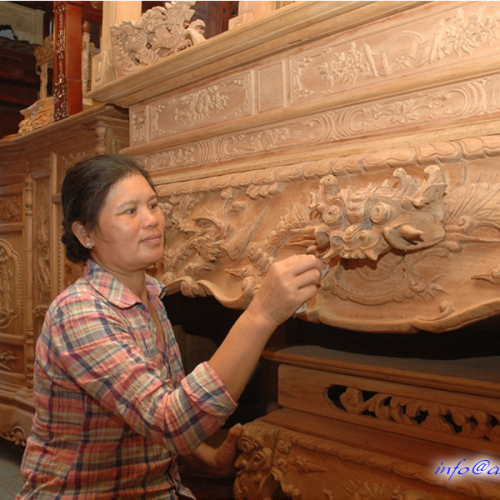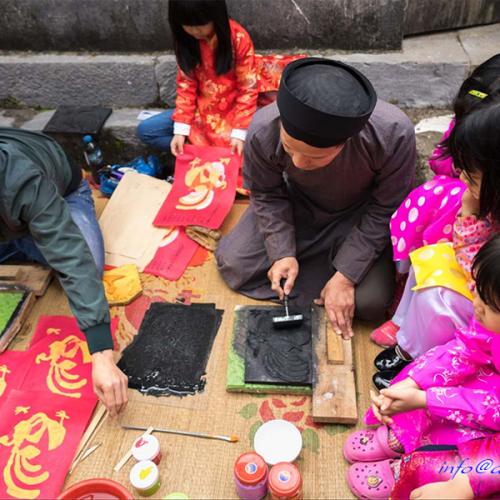Vietnam | 10 best things to do in Hoi An Ancient Town
Hoi An Ancient Town is a well-known city in Quang Nam province, with over 1,000 architectural monuments ranging from streets, houses, meeting rooms, temples, shrines, ethnic churches, ancient wells... to traditional dishes and the character of the people. Visitors will be captivated by Hoi An's ageless charm, which is wonderfully rustic and attractive.
Visit Hoi An between February and April, when the city is at its busiest with tourists. It rains less, there is no hot sun as in the summer, the weather is pleasant, and the space is spacious. Tourists can now easily see the beautiful scenery in Hoi An or find new things to do and see to fully experience the city's charm.
Hoi An's Traditional architecture
Hoi An is well-known for its ancient architecture and the symmetry of its houses, walls, and roadways. Along with many ups and downs in history, Hoi An keeps the beauty of antiquity—moss on every tile roof, brick wall, and tree line—as well as the basic quality in the local people's mentality, a pure soul, and an honest attitude.
The most common type of dwelling is a 1- or 2-story tubular house with a narrow width and a very long depth. Because of the hard climate, the house is made of high-strength and long-lasting materials; the two sides have brick walls and wooden frames that are divided into three spaces by a walkway in the middle. Because each house in Hoi An strives for harmony between living space and nature, the yard is paved and ornamented with water tanks, rockeries, and trees, resulting in an overall appeal. Hoi An's housing is always light and airy, bringing people and nature together. These things give individuals with a pleasant and free way of life, as well as excitement for tourists visiting Hoi An
The streets in the old town are laid out horizontally and vertically in a checkerboard pattern, with short and attractive streets twisting around residences. Walking through each of those gorgeous and calm streets, visitors not only eat delicious meals but also receive a glimpse of Hoi An's people's daily lives, which are peaceful and basic. Because the complex of Hoi An architectural monuments is highly rich and beautiful, this destination has always been and will always be a site to attract domestic and foreign travelers to visit, discover, and thoroughly enjoy their vacation. When visiting Hoi An, you will note that time seems to have stopped in each of the moss-covered yin-yang roof tiles and the old gray mold walls that have been maintained from ancient times and yet exist now.
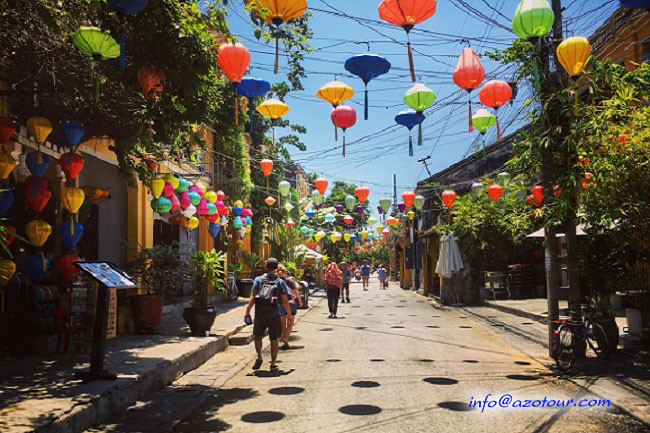
Typical relics
It would be a miss if visit Hoi An and not see the "Hoi An emblem," the Japanese Covered Bridge. The Japanese Covered Bridge, also known as the Japanese Temple, is a unique and characteristic architectural achievement in Hoi An, located near Nguyen Thi Minh Khai and Tran Phu streets. This temple was established in the middle of the 16th century by Japanese tradesmen.
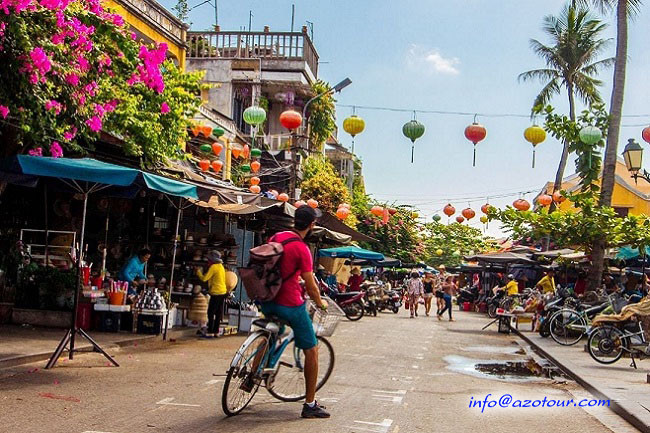
The Japanese Covered Bridge curves across a creek to the Hoai River using wooden planks. The 18-meter-long bridge has a yin-yang tile top and faces the Thu Bon River.
Above the main door are three Chinese characters that translate as "the bridge of distant friends." Under North Emperor Tran Vu's rule, there is a little temple over the bridge that specializes in the healing of wind and floods, bringing joy and happiness to everybody. At both ends of the bridge, there are groups of monkeys and dogs.
Despite renovations over the years, the Japanese Covered Bridge remains a one-of-a-kind structure, a Vietnamese architectural gem. This priceless object has been chosen as the official symbol of Hoi An.
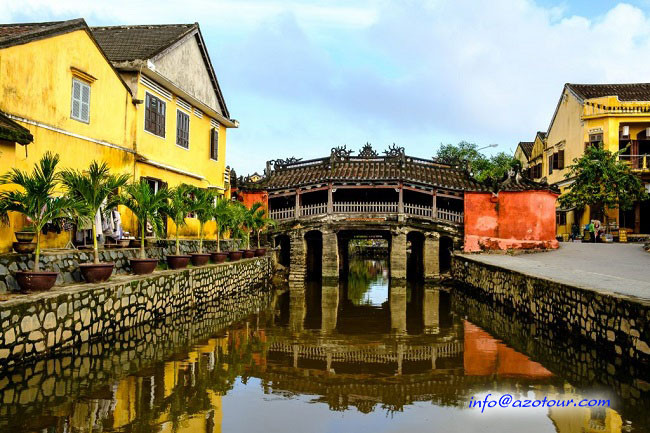
Also, if you want to learn more about the culture and way of life in Hoi An, you should visit several famous ancient residences and religious and social buildings, such as Quan Thang, Duc An, Tan Ky, or clubs such as Fujian, Chaozhou, Guangdong, and so on.
These are excellent Hoi An sites for exploring the town's traditional cultural settings.
Tan Ky Old House is a national historic site and the only place in Vietnam and the globe where heads of state and politicians can be welcomed. The historic house is influenced by Chinese, Japanese, and Vietnamese architecture. This area has the traditional tubular architecture of the old city, with two horizontal bars overlapping to represent heaven and earth, and five vertical bars representing the five elements. The exquisite architecture of the house reflects a Hoi An dream about human-nature harmony.
Today, Quan Thang Old House is one of Hoi An's most magnificent ancient houses. Kim Bong carpentry experts produce the stunning, vibrant houses and sculptures in the style of China's Hoa Ha province. The old palace has weathered the test of time, allowing tourists today to picture themselves as merchants in ancient Hoi An.
Hoi An specialties
When exploring Hoi An, you can freely choose refreshments from a profusion of establishments and street vendors. If you want to eat the best dessert in Hoi An, made of maize, crackers, and mussels, go to Bà Ga (Old Lady), a shop on Tran Phu Street's sidewalk...
Visitors can also experience great food in Hoi An, such as Quang noodles, in a variety of spots throughout the old town, including Mrs. Minh's shop, the Hoi An market, and the beginning of Tran Phu street. Cao Lau is also regarded as a must-try when visiting Hoi An. Many diners will be pleased with the golden color, bumpy eating, and wonderful soup, herbs, and crispy fried fat.
Ba Buoi, Ms. Nga's chicken rice, Phuong, or Madame Khanh's bread with meat, sausages, pâté, raw veggies, and aromatic sauces will make you "nod" to Hoi An cuisine.

Lantern is also known as as a "speciality" that should not be overlooked when visiting Hoi An. Lanterns of all colors and shapes can be found around the streets and homes. On the full moon day of the month, tourists see another Hoi An—a gorgeous Hoi An illuminated by lanterns.
Visitors should take a walk along the Hoai River or sit in the center of a small boat, paddling out into the river, gently dropping each lotus lantern, staring at the shimmering rows of lanterns, and praying for peace. The exquisite light of lanterns adorns Hoi An's loveliness, making it a feature, a spiritual dish of tourists that visit.
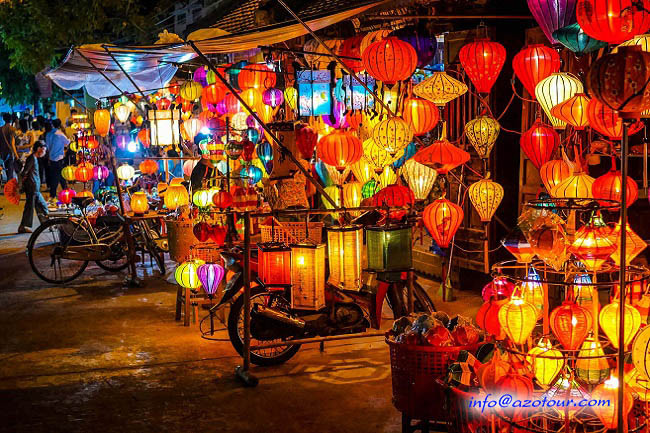
Hoi An's historic town has always had a distinct charm in every nook, on every roof, and on its narrow streets. Visitors may sense the warmth in every dish and in the people's pleasant grins when they come here. As you go down each small street, you appear to be transported back to your childhood in this odd and loved world.
 Hot deals
Hot deals


.jpg)
